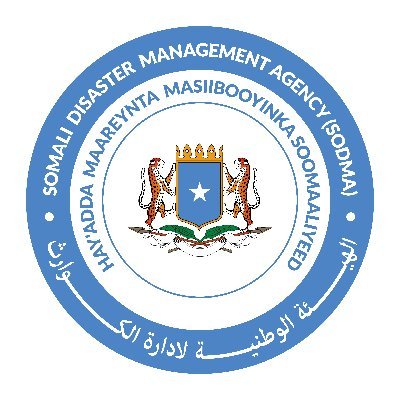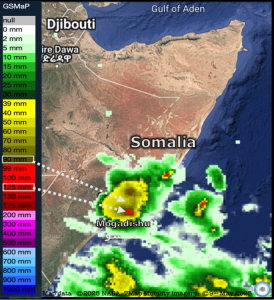PRE-INCIDENT INFORMATION
Banaadir Region Climatology Overview
Banaadir region covers the same area as Mogadishu which is the capital city of Somalia. Precipitation in Banaadir region is marked by a distinct seasonal pattern, with the majority of rainfall occurring from March to May (the Gu’ season) and again in October to December (The Deyr season). The early months of the year, specifically January and
February, are characterized by extremely low rainfall, with mere 1mm and 2mm recorded respectively. As March approaches, precipitation begins to rise, culminating in a significant uptick during April, where 58mm falls over 12 days, followed by an even greater amount of 89mmspread across 23 days in May, indicating the onset of the main rainy season.
LTM Climatology for Banaadir region, Somalia.
The mid-year months of June and July (The Hagaa season) Banaadir region continues to receive substantial rainfall, with 49mm and 58mm recorded, respectively. The rain generally tapers off in August and September, dropping to 45mm and 32mm over 16 days and 11 days respectively. As the rainy season draws to a close, October brings
40mm of precipitation, followed by a notable increase in November with 70mm over 13 days. However, December sees a decline again, with only 13mm falling over 4 days. This pattern underscores the crucial role of seasonal rains in sustaining the region’s ecosystems and agricultural activities.
UNEXPECTED EXTREME HEAVY RAINFALL CAUSING DEVESTATING URBAN FLOOD
Underlying Factor of unexpected Flash Floods in Mogadishu City.
The On the 9 of May 2025, there was an unprecedented flash flood event in Banaadir region at large as record-breaking rainfall which continued 2 to 10 hours that was amounting between 95mm to 120mm which has triggered a devastating flash flood has occurred in Mogadishu as the epicenter of these devastating floods.
SITUATION OVERVIEW.
The heavy rainfall with normal winds, nightlight and thunder has triggering widespread flash floods which swept forcefully across Highways and streets in city. The heavy downpour led into the city devastating consequences, including the displacement of residents, extensive damage to homes, Neighborhoods and IDPs Camp submerged in water, loss of lives, and public infrastructure Destroyed included crucial Highways.
The heavy Rainfall has left with Devastating Resulting to Community in Mogadishu city, many areas inaccessible and severely disrupted transportation and daily life. The flash floods strongly affected in the ancient districts where significant losses are reported.








